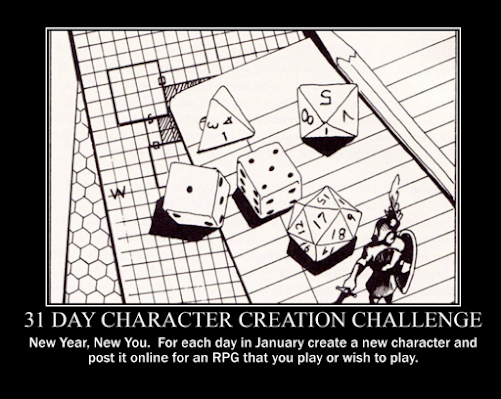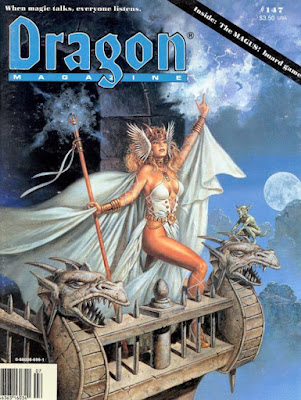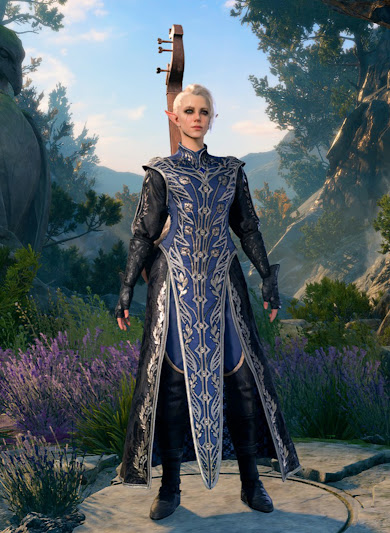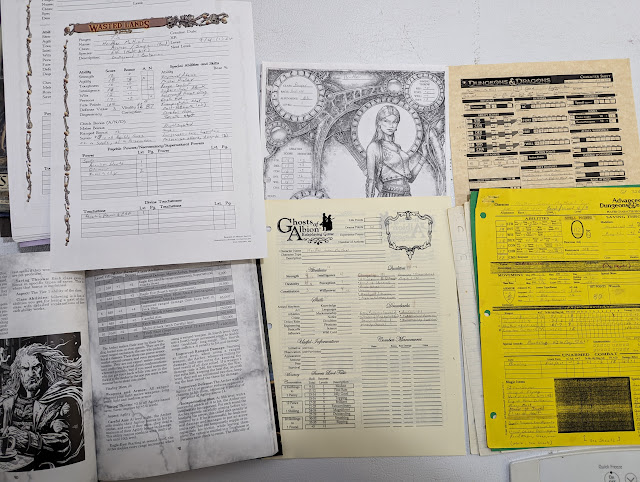
As the decade of the twenty-tens began, so too began a rise in the number of events and encounters that were strange and inexplicable except when using magic as the answer. Ghosts. Men and women acting in strange ways without their knowledge. Antiques and artefacts with strange provenances being stolen. Rivers seeming to come to life. People disappearing in strange ways. Foxes seeming to talk. If you are prepared to accept that magic real, then it is obvious that its power and occurrence is on the rise, causing the life of the Demi-monde, those persons and creatures who have been touched or changed by magic, to grow and interact with wider society. Of course, the police, even London’s Metropolitan Police Service, is unprepared for such a change in circumstances. Except, that is for the Folly. The Met’s ‘Special Assessment Unit’, its headquarters in a grand building on Russell Square, has long been on decline by the twenty-tens, its operational staff having dwindled to just one—Detective Chief Inspector Thomas Nightingale—its commanding officer and a registered practitioner of Newtonian magic. With the resurgence of magic, Nightingale’s own powers have grown again and he has recruited his first apprentice in many years, Constable Peter Grant. In the decade since, Constable Grant has investigated numerous strange cases, known as ‘Falcon’ cases, both inside London and outside it, and become a significant figure within the Demi-monde himself. Yet there has also been the growing need to hire outside consultants on a range of subjects and recruit and train more apprentices. The Folly, is, once again, playing an important role in police matters, even the police’s attitude towards it is not always a positive one. This is the background to the
Rivers of London series of novels and graphic novels by Ben Aaronovitch and so too, to
Rivers of London: the Roleplaying Game.
Rivers of London: the Roleplaying Game is published by
Chaosium, Inc.. In it, players will take the roles of men and women newly recruited or attached to the Folly, a few able to learn and cast magic, most with other gifts and advantages. Under the aegis of the Metropolitan Police Service and its code of conduct and legal powers, they will investigate occurrences of magic and other strange phenomena, hopefully to learn more about its practice and the Demi-monde, but primary to protect the public at large and ensure that no laws have been broken. It is thus an investigative roleplaying game, one notably written for both those new to roleplaying and those not new to roleplaying. For those new to roleplaying, the
Rivers of London: the Roleplaying Game offers a solo case file or adventure—based on the short story, ‘The Domestic’ from Tales of the Folly—which will the player how to roleplay and how the rules work. This is much like the solo adventure
Alone Against the Flames to be found in the
Call of Cthulhu Starter Set , which also teaches a player the basics of the rules, how to create an Investigator, and the possible outcomes of various choices. This is no coincidence.
Rivers of London: the Roleplaying Game not only includes an introductory solo investigation, but it also employs the same mechanics as
Call of Cthulhu, Seventh Edition, although in a much cutdown, highly streamlined version. Consequently, anyone who has played
Call of Cthulhu, Seventh Edition or even the
Basic Roleplaying: Universal Game Engine, will be able to pick up and play
Rivers of London: the Roleplaying Game with ease.
It should also be noted that
Rivers of London: the Roleplaying Game comes with Ben Aaronovitch’s full endorsement. It uses the
Basic Roleplaying: Universal Game Engine—which is always what he has wanted for a roleplaying game based on his book—and includes notes and asides throughout that add extra commentary to the setting of the roleplaying game. Here he even says that, “Rivers of London: the Roleplaying Game could even be described as “Call of Cthulhu—now with added hope!” However, it should be made clear that although there are occasional elements of horror within the novels, their genre and that of
Rivers of London: the Roleplaying Game is Urban Fantasy. Much like novels themselves, the roleplaying game ties in with Aaronovitch’s own nerdiness and geeky knowledge of games, roleplaying games, and random Science Fiction and fantasy. It also be noted that
Rivers of London: the Roleplaying Game is set after the events of False Value, the eighth novel in the series. Consequently, there will be spoilers in the roleplaying game for anyone who has not read either the novels or the graphic novels up until then.
After the delightful opening fiction of Peter Grant explaining roleplaying to other members of the Folly by running a session of Call of Cthulhu, and ‘The Domestic’ solo case file,
Rivers of London: the Roleplaying Game begins explaining how to create a Player Character. An Investigator has five attributes—Strength, Constitution, Dexterity, Intelligence, and Power—which range in value between thirty and eighty. He will also have a Luck value, which ranges in value between fifty-two and seventy, but will go down as it is spent to modify and succeed at various rolls. He will have one or two Advantages, such as Connected, Fast Reactions, Silver-Tongued, or Magical. The Magical Advantage is a Major Advantage and if selected means that the Player Character can learn and cast spells, but also means that he cannot take another Advantage. He also has an Occupation—some marked as being typical of the
Rivers of London setting, some not, such as Architect, Dilettante, Firefighter, Lawyer, Police Officer/Detective, or Social Worker. This Occupation lists the skills that the Player Character must have and the skills it is recommended that he have, plus contacts and possible equipment.
To create a Player Character divides a pool of points between the five attributes and selects both an Occupation and one or two Advantages. He then assigns a value of sixty points to a total of six skills and rolls for his Luck value. These six skills must include the required skills for his character’s Occupation, but he can choose as many or as few of the recommended skills as he likes. Some Occupations may list less than six skills in total, so the player is free to choose other to ensure his character has a total of six. Lastly, he creates a backstory for his character, ideally including an explanation of how he came to be associated with magic or the supernatural, and then equips him. The process is easy and well explained. Apart from the fact that a Player Character can learn magic and that they have all encountered magic or the supernatural, all Player Characters are ordinary human beings. There are, however, advanced options for veteran players who want to roleplay more experienced characters—with more skills, but also Disadvantages as well as Advantages—or characters who are Fae or Quiet People. (Sadly, there are no rules for creating Talking Fox Player Characters, because after all, who does not want to play a Talking Fox who knows he is a spy!)
Avtar Chakora is a London black cab driver who got involved in the Folly when his cab began taking fares and trips of its own across the city. It turns out that it was haunted by a previous driver, Dickie Stacy, who was giving fares to other ghosts, often to various locations in the Demi-monde across London. After several near accidents and an investigation by the Folly, Dickie and Avtar have come to an arrangement. Avtar will give rides to ghosts and more recently, other members of the Demi-monde, but Dickie would advise rather than drive. In return, Avtar, a fully trained accountant only because his mother wanted him to get a respectable job and he did not get the science grades at ‘A’ Level, provides the occasional fare for Folly and consults on accounts and financial records in cases. He finds this more interesting than normal accounting, though he does do the accounts and taxes of many other black cab drivers as well as his mother’s catering business. His cab is never without a box of snacks freshly cooked by his mother.
Name: Avtar Chakora
Gender: Male Age: 32
Occupation: London Taxi Driver
Strength 50 Constitution 50 Dexterity 60
Intelligence 60 Power 60 Luck 64
Advantages: The Knowledge, Silver-Tongued
Common Skills: Athletics 30%, Drive 60%, Navigate 60%, Observation 60%, Read Person 60%, Research 30%, Sense Vestigia 30%, Social 60%, Stealth 30%
Combat Skills: Fighting 30%, Firearms 30%
Language Skills: English 60%, Punjabi 60%
Expert Skills: Accounting 60%
Mechanically,
Rivers of London: the Roleplaying Game uses the system as
Call of Cthulhu, Seventh Edition, beginning with the skills. These have been divided between Common, Expert, and Combat skills. All Player Characters have the Common skills and may have one or more Expert skills depending upon their Occupations. It is possible to use an Expert skill, such as Astronomy, Locksmith, or Zoology, temporarily with the expenditure of Luck points. Combat skills are broad in their application and consist of just Fighting and Firearms. It is possible to take the Signature Weapon or Signature Firearm—bearing in mind that as the authors point out,
Rivers of London: the Roleplaying Game is a British roleplaying game set in the United Kingdom, and firearms are exceedingly rare—and this grants bonus dice for damage. Rolls under a skill or characteristic are a Regular success, under half the skill or characteristic value a Hard success, and rolls of one a Critical success. A roll of one hundred is a fumble, which will typically lead to an involuntary action such as freezing on the spot or becoming enraged. The circumstances of the skill or characteristic roll may also grant the player Bonus or Penalty dice, which work like Advantage and Disadvantage dice found in other roleplaying games.
Depending upon the situation, a failed roll does not mean that the Player Character has completely failed. He might succeed, but with consequences, or he might fail, but without consequences or perhaps learning something that will help him. If the roll is a failure, then the player has two options. He can expend Luck points to improve a roll, typically to turn a failure into a Regular success, or he can Push the roll. This allows him a second roll, but this raises the stakes. Not only does it take more time, but the player has to define how his character is undertaking this second attempt and the Game Moderator sets out consequences of failure. This is always worse than the consequences of failure for the first roll. All of the skills in
Rivers of London: the Roleplaying Game include suggestions for Pushed rolls and there are plenty of examples of the consequences if failed, as well.
Combat is designed to be fast and simple. It consists of a series of opposed rolls between the combatants, most commonly Fighting versus Fighting for mêlée, but a combatant can choose to dodge instead of fighting back, or even dive for cover or flee, both good options if the opponent is armed with a firearm. The results of the opposed rolls—Critical success, Hard success, Regular success, Weak success (more typically a failure in a non-combat situation), or Fumble—are compared and the combatant with the best result achieves his desired objective. Damage is determined by a Strength roll for mêlée or a Dexterity roll for firearms or spell combat. The number of points inflicted depends upon the quality of the roll—one for a Regular success, two for a Hard success, and three for a Critical success. Some weapons add to the result, such as a shotgun or rifle. This looks to be a very low level of damage in comparison to other Basic Roleplaying: Universal Game Engine roleplaying games, and it is. This is because a Player Character does not have Hot Points. Instead, he has a Damage Condition, either Bloodied, Hurt, Down, or Impaired. Each point of damage ticks off one of these conditions, and suffering four points of damage is a Mortal Wound and five points will kill a Player Character. Consequently, firearms are really dangerous in
Rivers of London: the Roleplaying Game, an assailant only requiring a Hard success to inflict a Mortal Wound and a Critical success to kill someone one. In general, once a fight gets to the damage stage,
Rivers of London: the Roleplaying Game can be brutal, but the Player Characters do have Luck on their side as well as careful play before then.
In general, the mechanics are very forgiving. Together with access to Luck points and Pushed rolls, and the possibility of failure not being absolute, but a chance of a Player Character being able to succeed, but with consequences or fail, but without consequences, there is a design choice here that focuses on the Player Characters succeeding and moving the story forward, getting to the next clue, and so on. This is not to say that there is no chance of failure in the
Rivers of London: the Roleplaying Game, but rather that it has been de-emphasised. As a result, the chances of absolute failure—the Fumble—are very low, but when it does happen, the consequences are likely to be woeful indeed.
Magic plays a big role in the
Rivers of London setting and so it does in
Rivers of London: the Roleplaying Game. There is a discussion of Vestigia, the trace left behind by magic and of the Signare, the signature unique to every magic practitioner. To use magic, a Player Character must have the Magical Advantage. This grants him a Signare, the Magic skill, and three starting spellings. He will either be a Newtonian apprentice—studying under a master the school of magic laid down by Sir Isaac Newton, or a Hedge Wizard. Spells are organised into Orders, typically five. A practitioner must know a certain number of spells from one Order before learning spells of the next, plus higher order spells typically have their perquisites. A spell can also be mastered, meaning that the Magic skill roll is made with a bonus die, and once mastered, can be boosted with extra Magic Points to extend the duration, range, and other effects, beyond the base cost. Not quite forty spells are detailed in
Rivers of London: the Roleplaying Game, but this is enough. It takes time to learn and then master spells, matching the pace with which Peter Grant learned magic in the novels.
In addition, casting magic and using spells can be very dangerous—and not only to electronic components and devices, which it will turn to sand. Use too much magic, cast too many spells, and a practitioner can suffer from Hyperthaumaturgical Degradation (HTD), damage to the brain that makes it look like a cauliflower. This occurs if a Pushed roll for the Magic skill is a failure or a Fumble, or if practitioner casts magic after running out of Magic Points. To check against the effects of Hyperthaumaturgical Degradation, the player makes a Power roll. At the very least, it will result in the loss of all Magic Points, which happens whatever the result, but at the very worst, it will inflict a fatal wound on the practitioner. Consequently, magic in
Rivers of London: the Roleplaying Game will give a Player Character the edge in a situation, but it has to be used with care as the consequences are grave.
Police Detective Constable Winifred ‘Fred’ Messam was seconded to the Folly after investigating a case a series of forged antiques which led to an encounter with some very angry spirits which the forgeries were being used to imprison and transport the spirits. She managed to protect herself and her colleague, despite him being knocked out. When the Folly investigated, it was discovered that she had inadvertently cast her first spell—Shield. She was recruited after the case was further investigated and the culprits arrested. As yet, Winifred is unsure if she likes being a wizard. It just adds to her workload with more training and studying as well as bring up her two children as a divorced mother. Consequently, she feels tired a lot, but is trying her best, especially given that most of the recent recruits to the Folly are younger than she is.
Name: Winifred ‘Fred’ Messam
Gender: Female Age: 38
Occupation: Police Detective Constable/Apprentice Newtonian Wizard
Strength 40 Constitution 50 Dexterity 50
Intelligence 60 Power 80 Luck 62
Advantages: Magical
Disadvantages: Slow-footed
Common Skills: Athletics 30%, Drive 30%, Navigate 30%, Observation 60%, Read Person 60%, Research 30%, Social 60%, Sense Vestigia 60%, Stealth 30%
Combat Skills: Fighting 60%, Firearms 30%
Language Skills: English 60%
Expert Skills: Appraise 40%, History 20%, Law 60%, Magic 60%
Spells: First Order – Werelight (Mastered), Impello; Second Order – Shield
Signare: A clash of Indie band guitars accompanied by the smell of Belgian chocolate and the feeling of hands in a bowl of washing up
For the Game Moderator, there is a wealth of background and advice—and that in addition to advice dotted throughout the book on various rules and aspects of the roleplaying game, all give out by friendly Mister Punch. This covers law enforcement in London and the Metropolitan Police Service, including diversity, equipment, crimes and how they are investigated, police powers and how to handle them. There is advice on running the game, including handling consent and good gaming at the table, and more. It notes that the tone of
Rivers of London: the Roleplaying Game is not gritty realism. The setting has magic after all, and is optimistic in outlook. The background for the Game Moderator includes ‘A Rogue’s Gallery’ of the various characters from the novels, such as Peter Grant, Thomas Nightingale, Abigail, and Toby. Various members of the Demi-Monde are given too, including Molly, genius loci of London’s rivers such as Beverly Brook and Lady Tyburn, Talking Foxes, and Zachary Palmer. All come with an illustration and full stats and write-up, though they are written from the point of view of Peter Grant—even himself—so there is a certain bias. If there is any write-up missing from here, it is that of Lesley May, Peter Grant’s former colleague and now rogue practitioner. There is also a history of London and magic in London, as well as a guide to central London. The Folly itself is described and mapped in some detail. Scattered throughout are case seeds that the Game Moderator could develop into a fuller adventure. This is backed up with ‘The Bookshop’, an introductory adventure adapted from the short story, ‘The Cockpit’, from the anthology, Tales from the Folly. Having already had one story adapted from the anthology, it would have been nice to have seen something original here lest the roleplaying game give the impression that all of its scenarios are going to be directly adapted from Aaronovitch’s fiction. It is also a short affair, meaning that the players could create characters and run through this in a single session.
Beyond ‘The Bookshop’, numerous additional rules are supplied for more advanced play and options. These enable experienced Player Characters or even Fae or even Quiet Person Player Characters to be created, new Occupations to be designed, and discusses the possibility of using organisations other then the Folly or even creating a Folly elsewhere. Besides revisiting various aspects of the rules, such as magic and enchantments, there is advice too on writing case file or scenarios, lastly, along with a set of ready-to-play, pre-generated Player Characters.
Physically,
Rivers of London: the Roleplaying Game is very well presented. The artwork and the cartography are excellent, and the book is very well written, although in need of a slight edit in places. There are some amusing in-jokes dotted here and there throughout the book, and the tone is fairly light from start to finish. There are also a lot of good examples of the rules throughout the book as well.
There is only the one issue disappointing about
Rivers of London: the Roleplaying Game to date that is the lack of support for it and the lack further case files to investigate. Otherwise,
Rivers of London: the Roleplaying Game is absolutely the roleplaying adaptation that Ben Aaronovitch dreamed of for his novels. Not only does it use the rules he wanted, but it presents both rules and background in a simple, straightforward, easy-to-grasp fashion that will not overwhelm the fan of the novels coming to
Rivers of London: the Roleplaying Game as his first roleplaying game or the roleplayer coming to the setting of the novels through the roleplaying game.
Rivers of London: the Roleplaying Game is an excellent adaptation of the novels, capturing their lightness of tone and detail, and delivering it to the gaming table. The
Rivers of London series have long defined the Urban Fantasy genre in the United Kingdom. Now
Rivers of London: the Roleplaying Game can do it in the roleplaying hobby.
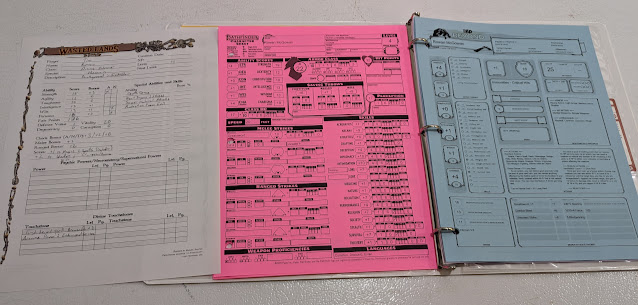
 Rowan McGown
Rowan McGown
